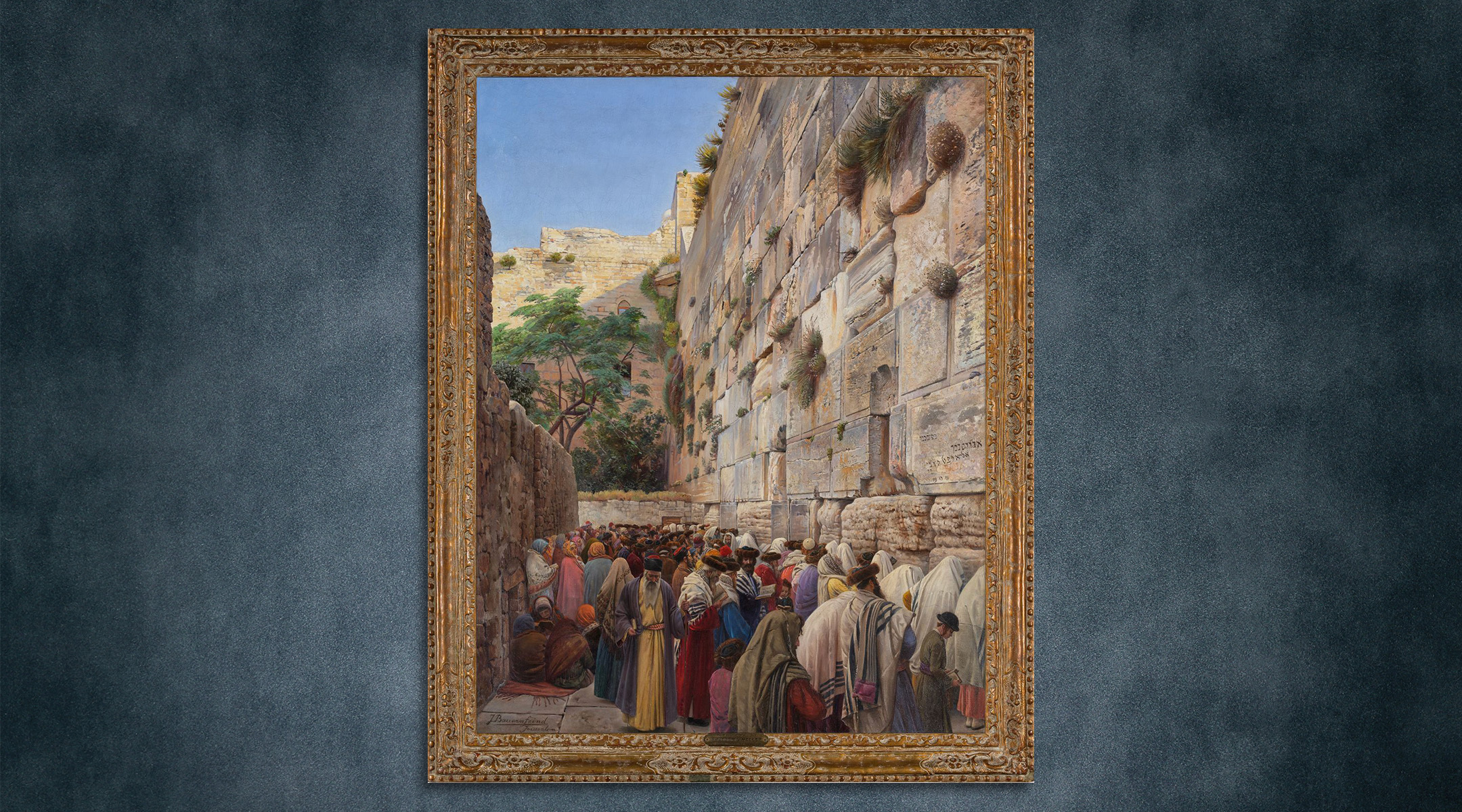(New York Jewish Week) – A hyper-realistic 19th-century painting of worshippers at the Western Wall that spent many forgotten years in a synagogue’s storage room is headed to auction at Sotheby’s New York on Thursday.
The painting, “The Western Wall,” created circa 1890 by German artist and illustrator Gustav Bauernfeind, is expected to fetch an estimated $2 to $3 million.
In his day, 1848-1904, Bauernfeind, who had some Jewish ancestry, was a well-known “Orientalist” painter who stood out for his realism and focus on architecture. This particular piece was donated to a synagogue in Southern California in the mid-1980s by the family of Theodore Cummings, a former U.S. ambassador to Austria and confidante to President Ronald Reagan. However, about 10 years ago, during renovations on the synagogue, the painting was placed into storage — where it remained until the executive director of the congregation discovered the piece last summer.
The director of the synagogue, which wishes to be anonymous, reached out to Benjamin Doller, a Sotheby’s senior auctioneer and its chairman of the Americas, who has previously auctioned several of Bauernfeind’s paintings. Doller immediately hopped on a plane to California to see the painting in person.
“It just knocked my socks off, basically,” Doller, who specializes in 19th-century art, told the New York Jewish Week. “I was like, ‘Oh my God, this is just incredible.”
“Even though they sent me the dimensions, until you stand in front of something, you really don’t get the sense of the scale,” he said of the painting, which is nearly 4 feet by 3 feet. “The quality was fantastic and the condition was amazing — it’s in really spectacular condition.”
“The Western Wall” depicts, in remarkably realistic fashion, a diverse set of worshippers huddled together at the base of Judaism’s holy site, known in Hebrew as the Kotel. Some Jews wear the fur hats known as shtreimels, while others wear fezzes and still others wear black hats and kippot. Nearly all of the men are wrapped in prayer shawls, while women are shown in the rear of the scene, their hair and bodies wrapped in colorful scarves and shawls.
Etchings of Hebrew names appear in the nearest corner of the wall, likely foreshadowing the modern practice of leaving notes and prayers inside the cracks of the wall, Doller said. Because Bauernfeind was a realist painter, the painting is considered an accurate depiction of what the Western Wall likely looked like at the time.
“It’s a very interesting historical document of how the area in front of the Kotel looked in the late 19th century before the whole area was cleared to create the big space that it is now,” Claude Piening, the senior international specialist for 19th-century European paintings at Sotheby’s, told the New York Jewish Week. “He was a master at painting perspective.”
Bauernfeind, who was born in Sulz am Neckar, Germany, began his career as an architect but turned to painting later in his life. Much of his work focused on the buildings and scenes of Palestine, where he traveled extensively in the 1880s before permanently moving to Jerusalem with his wife and son in 1896. He died there in 1904.
The painting is considered a highlight of this year’s “Masters Week,” a weeklong series of curated auctions that include “rare and exciting masterpieces from the 14th to 19th centuries,” according to Sotheby’s. “The Western Wall” will be on the block as part of the Master Paintings Part I auction that begins on Thursday at 10:00 a.m. at Sotheby’s headquarters on the Upper East Side.
Doller and Piening aren’t ruling out the possibility that it could go for higher than the estimate.
“The last time a comparable work came up was in 2007, and it made $6 million from a very low estimate,” Piening said.
That painting, “The Wailing Wall,” also by Bauernfeind, was of a similar scale, but featured only a dozen or so worshippers — as opposed to the packed crowd of “The Western Wall.”
“It’s just a very rare thing to appear on the market,” he added.
The New York Jewish Week brings you the stories behind the headlines, keeping you connected to Jewish life in New York. Help sustain the reporting you trust by donating today.





